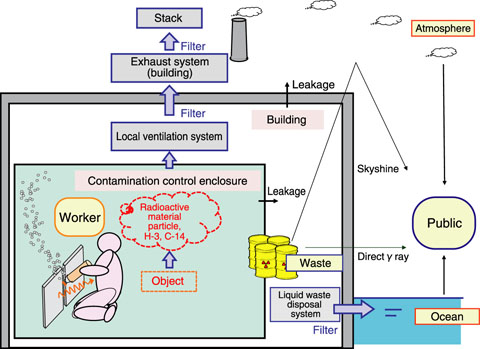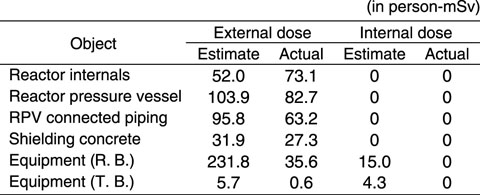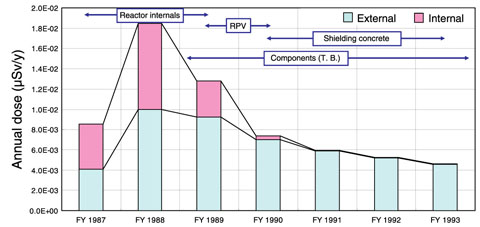
Fig.5-19 Pathways of radioactive materials to the environment for estimation of the public dose
Table 5-2 Calculated results of collective dose to workers compared with actual dose


Fig.5-20 Calculation results for annual public dose during JPDR decommissioning project
Aging or damaged nuclear facilities (e.g., Fukushima Daiichi NPS) should be decommissioned so as to ensure both engineering and radiological safety. Prior to the decommissioning process, a decommissioning plan, including a safety assessment for the public and the workers, is sent to the regulatory body for approval. The safety assessment requires the estimation of public and worker doses by considering various exposure pathways in normal and accidental situations during decommissioning, where the amounts of radioactive aerosols and vapors dispersed into the atmosphere and the ocean are calculated on the basis of the radioactive inventory, dismantling procedures, and schedule. A computer code system was developed for this safety assessment. A schematic illustration of the radionuclide pathway model used for normal situations is shown in Fig.5-19.
One of the most important parameters in the model is the radionuclide dispersion ratio to the air during the cutting of radioactive materials such as contaminated pipes. So far, the dispersion ratio has been obtained by experiments using non-radioactive pipes. To assess the existing data, we carried out cutting experiments using contaminated pipes, and confirmed that the existing data gave reliable and conservative estimates.
The dismantling activities of the Japan Power Demonstration Reactor (JPDR) have yielded information available for dose assessment. We applied the safety assessment code to the dismantling of JPDR, and compared the calculated results with the actual data. Table 5-2 shows the external dose to workers. It is found that the calculated results agree well with the actual data. Fig.5-20 shows the calculated results of the annual public dose. The results show that the public dose is negligibly low, that the dose during the period of dismantling of the reactor internals is dominant, and also that most internal and external doses are attributed to the exposure of radionuclides released to the ocean or the ingestion of sea food. The internal dose of carbon-14 is due to the ingestion of agricultural crops.
The code will be continually applied to forthcoming decommissioning activities of nuclear facilities.
This study was funded by the Nuclear and Industrial Safety Agency (NISA) of the Ministry of Economy, Trade and Industry (METI).